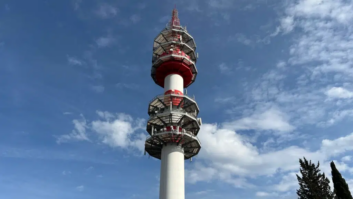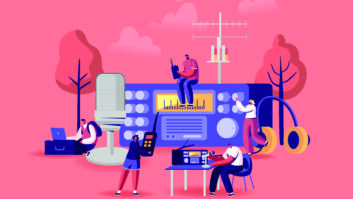When amateur radio enthusiasts established the American Radio Relay League in 1914, Morse Code was king. Long-distance telephone calls were too expensive for the vast majority of Americans, and commercial broadcast radio didn’t exist.
Some 93 years later, most modern “ham” operators use voice rather than Morse. Nearly everyone can afford long-distance phone calls and commercial radio has become senior partner in a media world that includes television and the Internet. Nevertheless, the ARRL is thriving, with 150,000 dues-paying members and a staff of 100 full- and part-timers.
The League continues to publish its long-running “QST” magazine, hosts a detailed Web site at www.arrl.org and plays a big role in aiding government and other emergency responders during natural and manmade disasters.
But isn’t amateur radio on its way out?
“There are almost five times as many ‘hams’ today as there were in the 1950s,” said Allen Pitts, ARRL’s media and public relations manager. “The number of amateur radio license holders in the U.S. has gone from 144,000 back in 1955 to 653,452 in February 2007. Predictions that the Internet, computers, cell phones and other developments would be the end of amateur radio were obviously mistaken.”
Beginnings
In 1914, “ham” radio operator Hiram Percy Maxim, inventor of the “silencer” for handguns, was trying to send a message from his 1 kW station in Hartford, Conn., to one in Springfield, some 30 miles away. Although Maxim’s station had a range of 100 miles, “some peculiar transmission condition … made direct ground-wave radio communication between Springfield and Hartford difficult if not impossible,” wrote Clinton D. DeSoto in a history of the ARRL, “200 Meters & Down,” published in 1936.
To bridge the gap, Maxim arranged with a ham in Windsor Locks — between his station and the one he was trying for each in Springfield — to “relay” his message. Maxim transmitted in Morse Code to Windsor Locks, who then retransmitted his message to Springfield.
“The feat done, Maxim sat back in his operating chair, puffing his familiar pipe and pondered more,” DeSoto wrote. Eventually, Maxim realized that a national association of hams that could relay messages across the country, station to station, could be of profound social benefit. From this inspiration, and with the help of the Radio Club of Hartford, the ARRL was born.
“By August 1914, more than 200 relay stations had been appointed, from Maine to Minneapolis and Seattle to Idaho,” DeSoto wrote. By the end of 1915, “Amateur stations were accomplishing what were in those days unbelievable feats in transmission and reception. With homemade equipment, often not exceeding $100 in total cost, and in the despised 200-meter region, they were frequently out-performing government and commercial stations representing investments of hundreds of thousands of dollars.”
Soon after, the ARRL marked Washington’s birthday on Feb. 22, 1916 by relaying a message through its member stations across the United States. “The Pacific Coast got the message 55 minutes after it started at 9XEl; the Atlantic Coast, 60 minutes after; New Orleans and Canada each had it in 20 minutes,” wrote DeSoto.
This early success proved how effective, fast and useful amateur radio stations could be in relaying messages nationwide and to other countries. For an unpaid volunteer radio network to deliver such performance in 1916 was unprecedented.
Making a difference
Any time disaster hits, proponents say, amateur radio operators are there to help, backed by a wealth of fixed and portable radio systems. This is why local authorities turn to hams when regular channels of communication fail, as was the case during 9/11 and Hurricane Katrina.
Providing emergency communications is a big part of the Amateur Radio Service and written into the FCC’s reasons for its creation. Besides making a difference during disasters, ARRL members help enhance homeland security. In fact, they’ve been doing so since the beginning.
The year was 1915. The United States officially was neutral at this stage of the Great War, and the U.S. Secret Service was keeping an eye out for foreign nationals who might be violating its neutrality while on American soil.
Some of their suspicions were focused on the German-owned Telefunken radio station WSL, which was based at Sayville on Long Island. Secret Service Chief W.J. Flynn was sure that the station was feeding intelligence back to Germany, but was unable to find proof. He had an inspiration: Why not ask a ham to listen in on WSL’s broadcasts? So Flynn recruited ARRL member Charles E. Apgar, who lived in Westfield, N.J., to listen in. Using a home-brewed recorder consisting of a Dictograph and a telephone receiver diaphragm, Apgar recorded WSL’s transmissions between 11 p.m. and 1:30 a.m., then rushed the recordings to the Secret Service for analysis.
“It soon became apparent that the station was sending information concerning Allied and neutral shipping to submarines at sea,” wrote DeSoto. Based on this evidence, the U.S. government seized WSL and interned its top managers.
The ARRL today
Given its rich past, it is not surprising that the ARRL puts a lot of emphasis on radio history. This is one of the reasons it still runs an amateur station, W1AW, in its headquarters in Newington, Conn. Dubbed the Hiram Percy Maxim Memorial Station, in honor of the man whose call sign was W1AW, this station maintains both antiques and the newest digital computerized equipment in working order, and broadcasts using both.
Local legend has it that Maxim’s ghost haunts W1AW, albeit in a friendly way.
Still, today’s ARRL is nothing if not modern. Most members have long traded in their Morse Code keys for microphones and computers, and have done their best to stay at the leading edge of RF technology. This, proponents say, is why hams are such a resource during disasters. They provide an unmatched combination of equipment and experience to government authorities, for free.
In the aftermath of Hurricane Katrina, “Over 200 amateur radio operators from 35 states and Canada were processed and deployed to the field” from Montgomery, Ala., wrote Greg Sarratt, ARRL Alabama section manager. More served at refugee centers and other locations around the country. “Amateurs in the field and at Montgomery worked long hours each day, working many consecutive days with no time off.” After 9/11, he said, hundreds of hams came from as far as Texas, California and Canada to New York to provide emergency communications. In particular, hams provide a communications lifeline for the American Red Cross and its teams.
As for the future? “Whenever Americans need us, we’ll be there,” said Pitts. “No matter how times change, the fascination of radio remains undimmed for our 150,000 members.”












